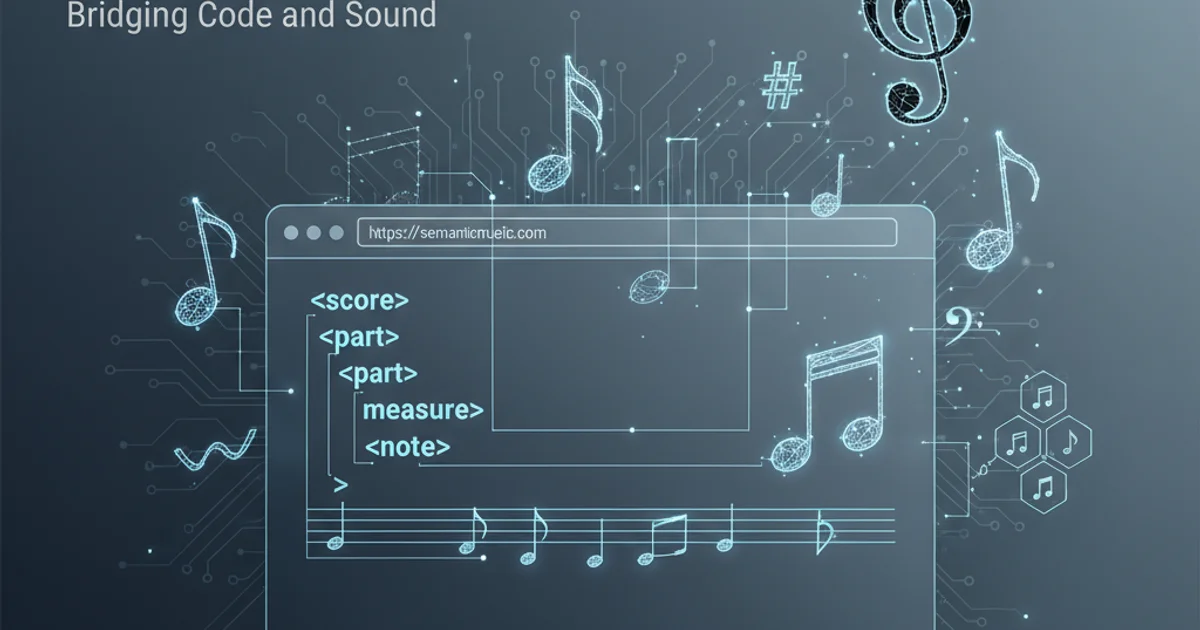Semantic music notation in HTML code
Categories:
Semantic Music Notation in HTML: Beyond Basic Text

Explore how to represent musical symbols and structures semantically within HTML, leveraging Unicode and modern web technologies for accessible and meaningful music notation.
Representing music notation on the web has traditionally been a challenge. While images provide a visual solution, they lack semantic meaning, making them inaccessible to screen readers and difficult for search engines to interpret. This article delves into methods for embedding musical notation directly into HTML, focusing on semantic approaches that enhance accessibility and machine readability. We'll explore Unicode characters, HTML entities, and the potential of more structured formats to bring music to the web in a meaningful way.
The Challenge of Music Notation in HTML
Standard HTML elements are designed for text and document structure, not for complex graphical representations like musical scores. A simple image of a score, while visually appealing, offers no underlying data for assistive technologies or for programmatic manipulation. This gap necessitates creative solutions that balance visual accuracy with semantic integrity.
flowchart TD
A[Music Notation] --> B{HTML Representation?}
B --"Visual Only"--> C[Image (PNG/SVG)]
C --> D{Accessibility Issues}
B --"Semantic & Visual"--> E[Unicode Characters]
E --> F[HTML Entities]
F --> G[Web Fonts]
G --> H[Structured Data (e.g., MusicXML, MEI)]
H --> I{Enhanced Accessibility & Machine Readability}Flowchart illustrating approaches to music notation in HTML.
Leveraging Unicode and HTML Entities
The simplest and most direct way to include individual musical symbols is through Unicode characters and their corresponding HTML entities. Unicode provides a vast range of musical symbols, from basic notes and clefs to accidentals and time signatures. While this approach is excellent for isolated symbols, it doesn't inherently convey musical structure (e.g., a sequence of notes forming a melody).
<p>
A quarter note: ♩ (♩)
</p>
<p>
A treble clef: 𝄞 (𝄞)
</p>
<p>
A flat symbol: ♭ (♭)
</p>
<p>
A sharp symbol: ♯ (♯)
</p>
Examples of musical symbols using HTML entities and Unicode.
<meta charset="UTF-8">) to guarantee proper rendering across all browsers and systems.Beyond Individual Symbols: Structured Music Data
For more complex musical passages, simply embedding Unicode characters falls short. Semantic representation requires a way to describe relationships between notes, rhythms, and other musical elements. While HTML itself doesn't have native elements for music, external standards like MusicXML or MEI (Music Encoding Initiative) are designed for this purpose. These can be embedded or linked, and then rendered using JavaScript libraries or specialized web components.
<!-- Example of a simplified MusicXML snippet -->
<score-partwise version="3.1">
<part-list>
<score-part id="P1">
<part-name>Piano</part-name>
</score-part>
</part-list>
<part id="P1">
<measure number="1">
<attributes>
<divisions>1</divisions>
<key><fifths>0</fifths></key>
<time><beats>4</beats><beat-type>4</beat-type></time>
<clef><sign>G</sign><line>2</line></clef>
</attributes>
<note>
<pitch><step>C</step><octave>4</octave></pitch>
<duration>4</duration>
<type>whole</type>
</note>
</measure>
</part>
</score-partwise>
A simplified MusicXML example representing a whole note C4.